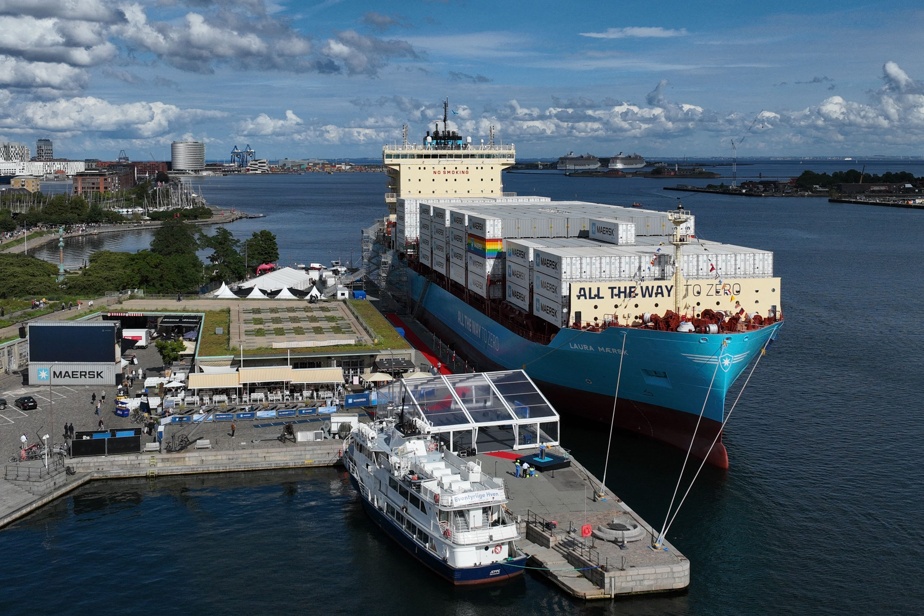(Copenhague) La présidente de la Commission européenne, Ursula van der Leyen, a baptisé jeudi le premier navire au monde fonctionnant au bio-méthanol, qui a officiellement fait son entrée dans la flotte de l’armateur danois Maersk, géant du transport maritime.
Construit en Corée du Sud par Hyundai Heavy Industries (HHI) et équipé d’un moteur à double carburant, Laura pourra transporter quelque 2136 TEU conteneurs (TEU).
Ce relativement petit modèle opérera à partir d’octobre, principalement dans la mer Baltique.

PHOTO SERGEI GAPON, AGENCE FRANCE-PRESSE
« Le méthanol vert est notre combustible de prédilection […] because it is the only solution capable of meeting the requirements of carbon neutrality, said Vincent Clerc, CEO of the flagship of Danish industry during the inauguration.
“Neither we nor the climate can afford to rest on our laurels or wait for other solutions to emerge in the late 2020s,” he added before Mme van der Leyen presides over the traditional bottle throwing on the hull.

PHOTO MADS CLAUS RASMUSSEN, AGENCE FRANCE-PRESSE
The President of the European Commission, Ursula van der Leyen, with the President of the Board of Directors of AP Moeller, Robert Maersk Uggla.
Over the past two years, Maersk, number two in container shipping, has ordered 25 ships running on green methanol. 19 of them already in production should be able to sail by 2025, reducing annual CO emissions2 of approximately 2.3 million tonnes.
Laura alone saves 100 tonnes of CO2 per day compared to a sister ship running on fuel oil.
Globally, maritime transport pollutes more than air transport, according to the Higher Institute of Maritime Economics (Isemar).
It is responsible for 2.89% of greenhouse gas emissions, according to the latest figures published by the International Maritime Organization (IMO).
Green methanol, also called “e-methanol”, is produced by mixing carbon dioxide (CO2) and green hydrogen, produced by breaking down water molecules using an electric current – what is called “water electrolysis” – with renewable energy sources.
Maersk, which sold its oil division to TotalEnergies in 2017, intends to achieve carbon neutrality by 2040.
